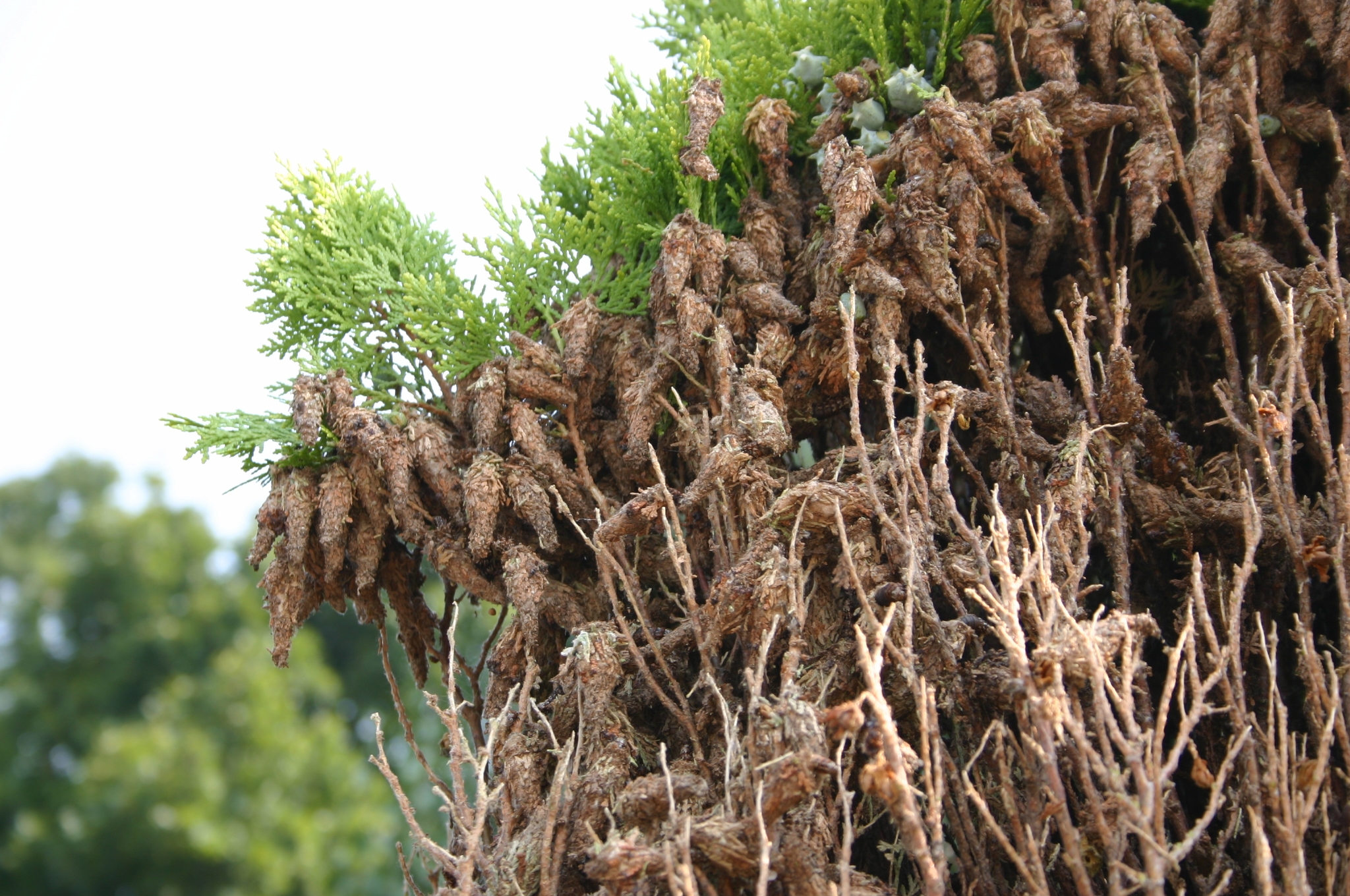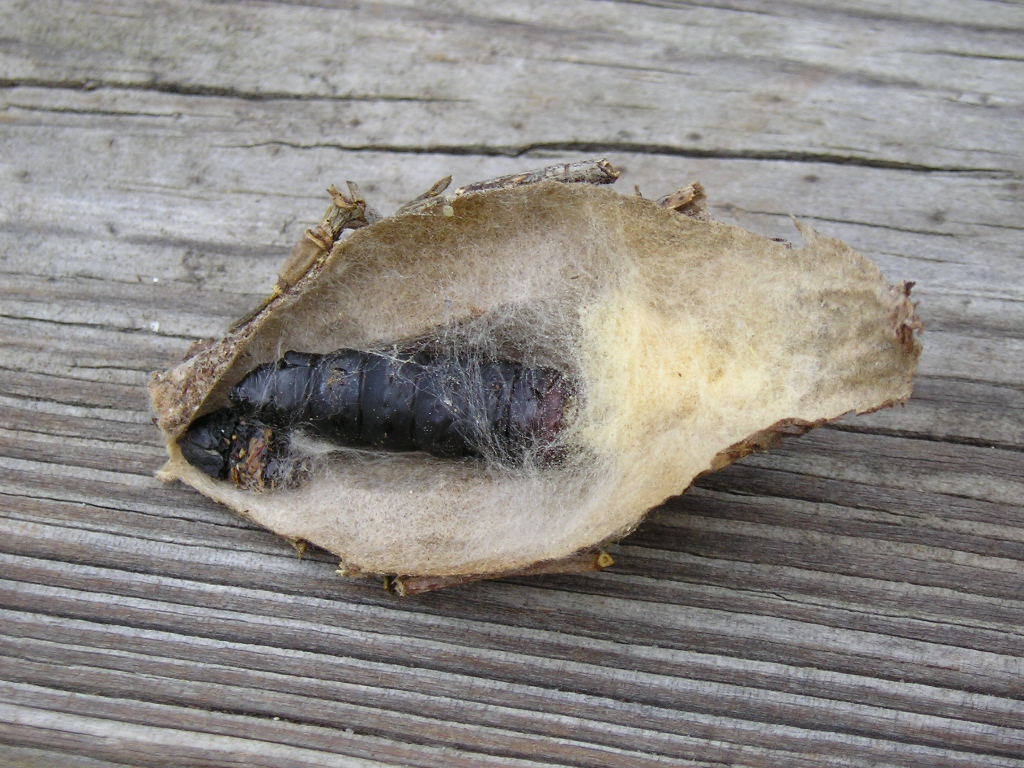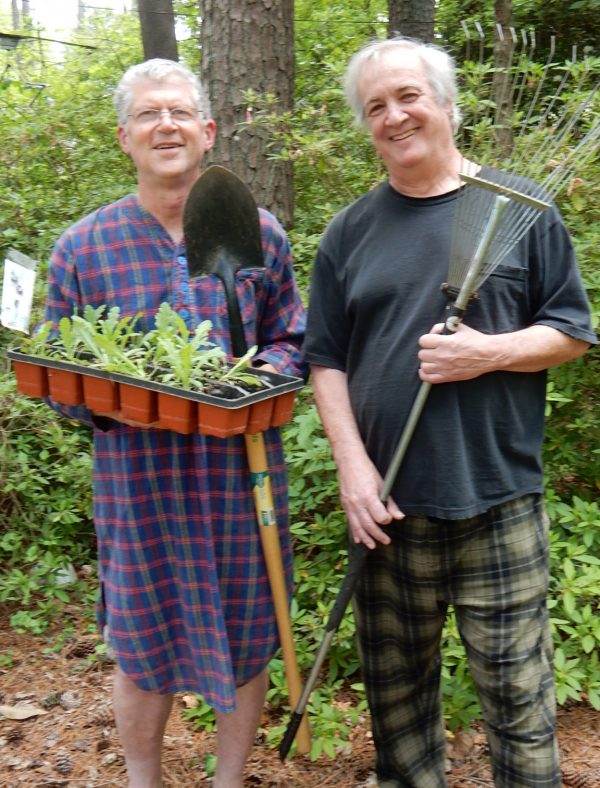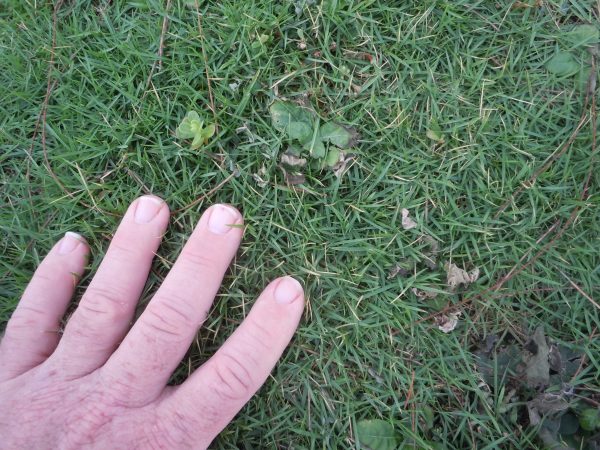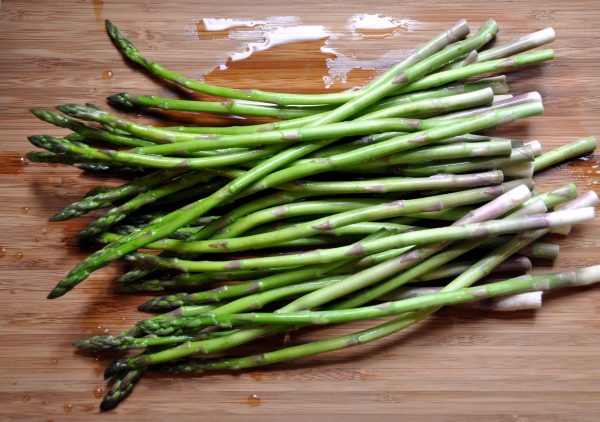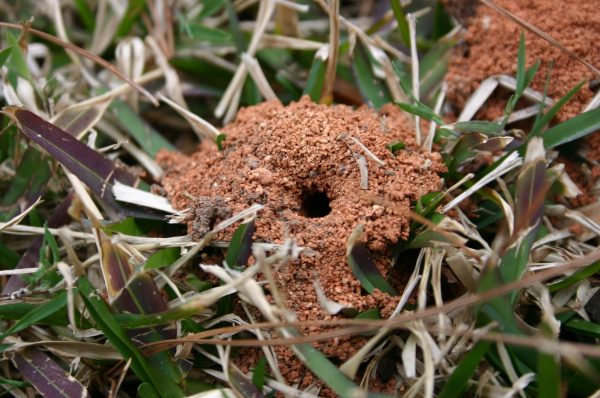Bagworm – Identification and Control
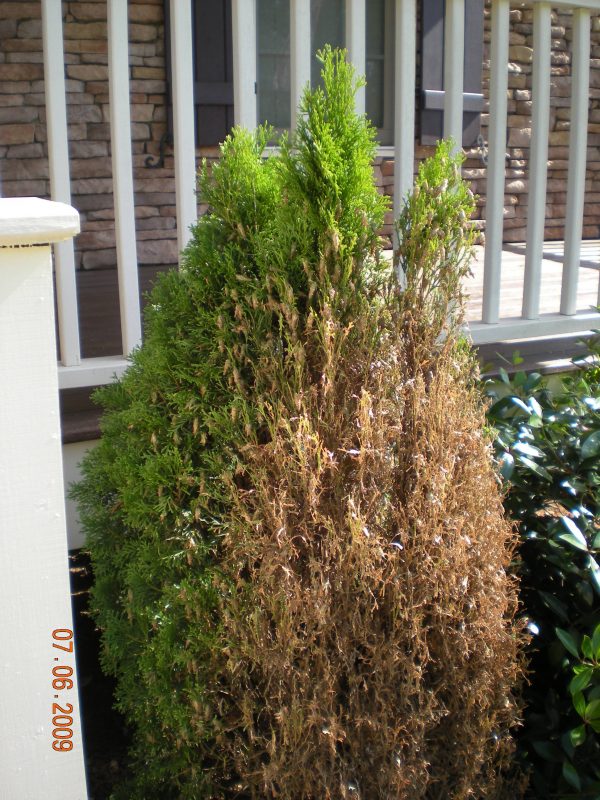
My colleague Newton Hogg used to say “When I can see their damage at 50 miles per hour, I KNOW someone has a serious problem with bagworms.”
I was driving down Roosevelt Highway in south Fulton county when I saw a juniper infested with bagworms. I hopped out to take a picture for you!
Juniper, Leyland cypress, arborvitae and cedar trees can be skeletonized in late summer by bagworms. Examination of a rapidly disappearing shrub reveals dozens of brown “bags” hanging from the limbs. The bags are made from the plant’s needles and they contain an adult moth larva, who feasts on the plant’s greenery.
Once a larva has eaten enough to satisfy it, it attaches itself to a branch or nearby surface to pupate into the adult moth. Males emerge from their bags, females do not. Males mate with females, who lay their eggs in the bag, protected from winter cold and pesticides.
By understanding the bagworm life cycle, a control strategy can be designed.
Young bagworms who are actively feeding in May can be controlled with one of the organic caterpillar killer products that contain Bacillus thuringiensis (B.t.) click for sources).
Garden insecticides (click for sources) are also very effective.
Feeding begins in mid-May and lasts until late July, depending on the weather. Examine the bags and the shrub to be sure the larvae are actively feeding before depending on chemical control to do the job.
After mid-August, when the insects are pupating inside their bags, it is too late to control the pest with insecticides. The bag protects its inhabitant securely. At this point there is no solution except hand removal and destruction.
Wear a long sleeved shirt to avoid being scratched by the needles and scales of the host plant. Make a note to spray insecticide in mid-May, when the moths have not yet formed their protective bags. Repeat in early June.

bagworm damage to shrub
bagworm after pupation begins
Bagworm larva feeding on juniper


